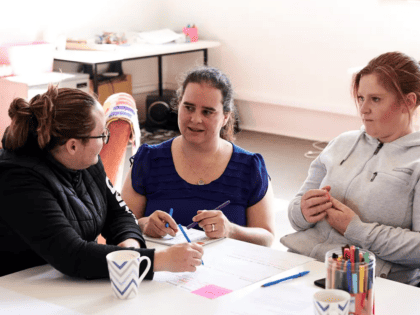News & Events


New report confirms arts projects support sustainable disaster recovery outcomes
A new report released today has validated the long-term and multi-pronged impact of creative projects in the recovery of rural communities following disaster events.
The ‘Impacts of Creative Recovery’ report confirms that arts projects have a unique ability to build long-lasting community resilience, wellbeing and local capacity for disaster preparedness, response and recovery. It also highlights that creative recovery programs have the capacity to mitigate disaster impacts, as well as the disempowerment that so often results from the stresses and strains of disasters.
The study, undertaken by the Creative Recovery Network, involved reviewing five diverse arts-led projects funded by the Foundation for Rural and Regional Renewal (FRRR) to support recovery following different disaster events. Researchers Elouise Bagnara and Bronwyn Ward explored project outcomes across four key areas: social capital and connection; revitalisation and placemaking; acceptance and growth; identity and belonging.
The evaluation recommends new approaches to provide ongoing support for creative recovery programs; to embed creative recovery processes into policy, which is integrated into wider disaster management arrangements; and investment in local creative economies to provide ongoing participation and employment in the arts.
FRRR’s Disaster Resilience and Recovery Lead, Nina O’Brien, said that FRRR has seen the impacts that projects have in the medium-term but this was a chance to check back in and look at the longer-term legacy of each of these projects.
“The evaluation showed each project has had a marked impact on lasting social capital and connection, leaving a legacy of enriched community and social connection, while permanently strengthening both creative practice and disaster management processes.
“It was inspiring to see the influence they’d also had on local placemaking, helping create a stronger sense of identity, particularly informing how the community was seen by others. The report also found that the projects led to mentorship and educational opportunities that have influenced both the prosperity of the local community and the quality of life of those living in affected communities.
“But some of the strongest benefits were around mental health, helping people to understand and shape their world and respond to the disaster event. The projects also seem to have increased the understanding of mental health and led to improved wellbeing practices and resources, which is so important for the long-term health of these communities,” Ms O’Brien said.
Creative Recovery Network Executive Officer, Scotia Monkivitch, said in many ways, the report confirmed what the sector has known for some time but it adds impetus to the call for further funding and embedding such initiatives into disaster management processes.
“We know that arts and culture play an integral role in building social cohesion, connectedness and strength for a hopeful future. This report contributes to the growing body of research that clarifies the many benefits arts-based practices can bring to disaster impacted communities through supporting opportunities for respite and joy, providing spaces for gathering and connection and improving mental health outcomes through engagement in creative processes.
Our hope is that this report will support the ongoing development of policy frameworks and funding opportunities to embed the arts in programs that support communities through the disaster experience and build capacity for future challenges,” Ms Monkivitch.
‘Impacts of Creative Recovery’ was jointly commissioned by Creative Recovery Network and the Foundation for Rural and Regional Renewal. The report was researched by Elouise Bagnara and Bronwyn Ward and authored by Elouise Bagnara.
The projects studied included:
- Fire Danger Rating Claymation Project- Strathewen, Victoria
- Cyclone Lam Recovery Concert – Galiwin’ku / Echo Island, Northern Territory
- Channel Country Ladies Day – Eromanga, Queensland
- Dress the Central West Collaborative – Blackall, Barcaldine, Winton and Longreach, Queensland
- Connecting the Community Through Hands-On Workshops – Tumbarumba, New South Wales
SUBMIT YOUR CASE STUDY



